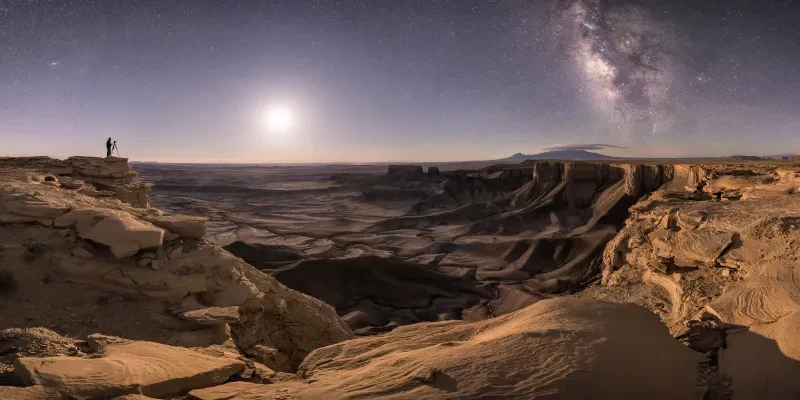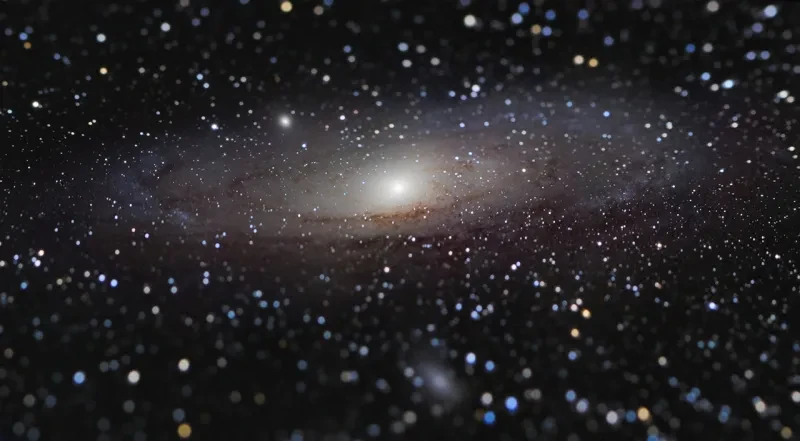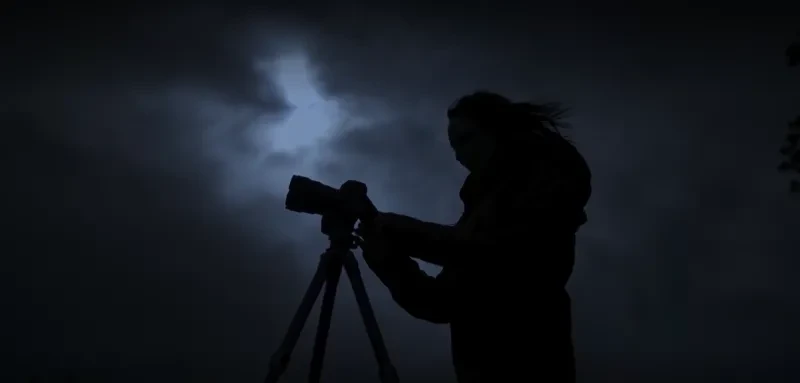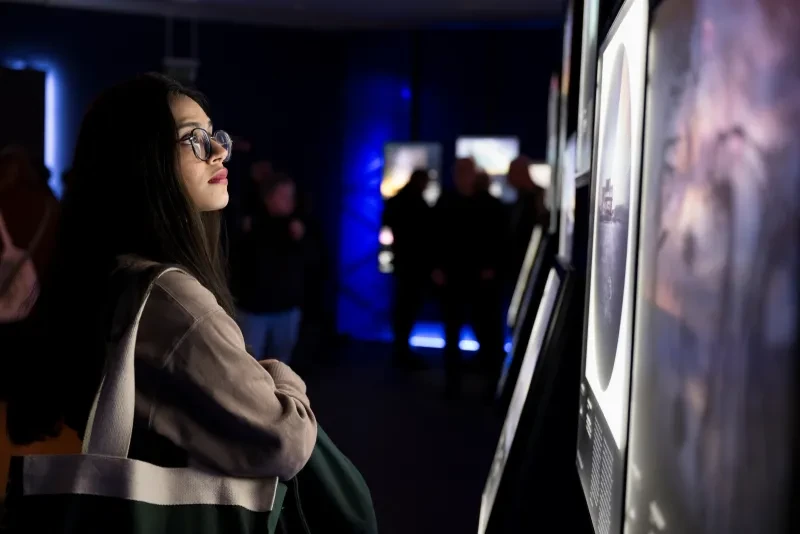
The winner of Astronomy Photographer of the Year 16 has been revealed.
The prize-winning photographers in the world's biggest space photography competition were announced during an online ceremony on Thursday 12 September.
As well as the overall winner, there were 11 different category prizes up for grabs, from galaxies and shimmering aurorae to incredible skyscapes. Explore all the category winners and shortlists below.
The images will now go on display at the National Maritime Museum in a dedicated exhibition space. Visit the Museum for free, and see the world's greatest space photography.
The overall winner

Distorted Shadows of the Moon's Surface Created by an Annular Eclipse by Ryan Imperio
Photographer Ryan Imperio from the United States has been named the overall winner of Astronomy Photographer of the Year 16.
The image is a composite of more than 30 separate photographs of the Sun, taken in Texas during the annular solar eclipse of 14 October 2023.
Together the photographs capture the fleeting optical illusion known as 'Baily's beads', which occurs when sunlight shines through the valleys and craters of the Moon.
“What an innovative way to map the Moon’s topography at the point of third contact during an annular solar eclipse," competition judge Kerry-Ann Lecky Hepburn says. "This is an impressive dissection of the fleeting few seconds during the visibility of the Baily’s beads. This image left me captivated and amazed. It’s exceptional work deserving of high recognition. Congratulations!”
Learn more about the winning image
See the full Our Sun shortlist
Never miss a shooting star
Sign up to our monthly space newsletter for amazing space stories, astronomy guides and more from Royal Museums Greenwich.
Skyscapes category winner

Tasman Gems by Tom Rae
"It’s very challenging to create this sort of composition without tipping the balance in favour of either foreground or background. Here, the grass and central rock retain wonderful detail, as do the midground mountains, but the vibrance and detail in the cosmic background shine through as well.
"Even the airglow adds to the image, which is no easy feat! As well as being technically impressive, the balance also produces a sort of surreal quality. A slightly dream-like connection between the Earth-bound and the celestial."
– Ed Bloomer, competition judge
See the full Skyscapes shortlist
Galaxies category winner

Echoes of the Past by Bence Tóth and Péter Feltóti
"Galaxies are among the most amazing phenomena you can observe with a telescope. Each is unique, but some are more special than others. Centaurus A is one of the most extraordinary of its kind, and this image certainly stands out among galaxy photos. Thanks to accurate photon collection, precise image processing and cooperation between fellow astrophotographers, a photo taken on a challenging expedition has become one of the best captures of this object to date."
– László Francsics, competition judge
See the full Galaxies shortlist
Our Moon category winner

Shadow Peaks of Sinus Iridum by Gábor Balázs
"This is a very impressive image. Sinus Iridum, known as the 'Bay of Rainbows', is about 260 km in diameter and is bordered by several smaller craters, showcasing the Moon’s rugged terrain.
"The detailed capture of Pythagoras, noted for its depth and complex features, is enhanced by the phenomenon of libration, where slight oscillations in the Moon’s orientation allow Earth-bound observers a glimpse of areas typically hidden from view. This image not only highlights the capabilities of modern astrophotography equipment but also offers a vivid illustration of lunar surface features, contributing valuable insights into lunar geology."
– Yuri Beletsky, competition judge
See the full Our Moon shortlist
Aurorae category winner

Queenstown Aurora by Larryn Rae
"This extraordinary panoramic image captures an aurora with rare red and pink hues over New Zealand. This is a phenomenon typically seen near the poles but appears here due to intense solar activity. The vivid red colours are produced at high altitudes when charged particles from solar flares and coronal mass ejections interact with oxygen in Earth’s atmosphere.
"Red aurorae are less common than green ones, which occur at lower altitudes where there is more oxygen to interact with and a higher density of atoms. This makes the observation more unique and special; an event typically associated with significant solar activity and usually only visible under clear, dark sky conditions."
– Yuri Beletsky, competition judge
See the full Aurorae shortlist
Planets, Comets and Asteroids category winner

On Approach by Tom Williams
"Venus shares very little with Earth-bound observers. Its highly reflective clouds show no detail when using conventional imaging methods. This photographer, however, has managed to tease a startling level of detail out of the phases shown here. Although the colours used are false, they are not too far from the natural colour of the planet. The thoughtful compositional work in the accurate scaling of the three phases is just the icing on the cake."
– Steve Marsh, competition judge
See the full Planets, Comets and Asteroids shortlist
People and Space category winner

High-tech Silhouette by Tom Williams
"This dramatic image serves as a powerful reminder of humanity’s ongoing presence in space. The photographer has done a great job in perfectly timing this shot so that the International Space Station is silhouetted against the backdrop of the Sun’s eastern solar limb.
"The photograph beautifully showcases the dynamic and active nature of the Sun, bringing it to life in a captivating way. Yet among that, your eye is permanently fixed on the tiny human-made spacecraft making its way across, emphasizing its significance amid the grandeur of the Sun. It’s a worthy winner of this category."
– Melissa Brobby, competition judge
See the full People and Space shortlist
Stars and Nebulae category winner

SNR G107.5-5.2, Unexpected Discovery (the Nereides Nebula in Cassiopeia) by Marcel Drechsler, Bray Falls, Yann Sainty, Nicolas Martino and Richard Galli
"The hits keep on coming from this team with another stunning revelation for us. Who knew this fantastic and delicate structure was there all along in one of the best-known constellations in the night sky? The thoughtful processing and clever use of colouring really make the supernova remnant pop against its background. It’s one of those images that you can stare into for hours and still find more detail. Stunning!"
– Steve Marsh, competition judge
See the full Stars and Nebulae shortlist
The Sir Patrick Moore Prize for Best Newcomer

SH2-308: Dolphin Head Nebula by Xin Feng and Miao Gong
"The Dolphin Head Nebula is a bubble of hydrogen pushed out from a very luminous Wolf-Rayet star. Stellar winds of over 1,500 km per second make the region rather more lively than even its animal namesake.
"This image is wonderfully detailed, and really displays the three-dimensional nature of the nebula. It is vibrant, without losing the very delicate surrounding structures, and you can clearly make out another little planetary nebula bubble (called PN G234.9-09.7) towards the bottom of the dolphin’s head, which is rarely imaged with any clarity. Very, very impressive work from any astrophotographer, let alone a newcomer."
– Ed Bloomer, competition judge
See the full Best Newcomer shortlist
The Annie Maunder Prize for Image Innovation

Anatomy of a Habitable Planet by Sergio Díaz Ruiz
"This strangely familiar representation of the Earth transforms scientific data through colour mapping to highlight the devastation already inflicted on our world. The image poignantly emphasizes the significant environmental challenges we face and the urgent need to protect and preserve our planet."
– Victoria Lane, competition judge
See the full Annie Maunder Prize shortlist
Young Competition

NGC 1499, a Dusty California by Daniele Borsari
"This incredibly beautiful image was very popular with the panel. Not least because it captures a nebula, atmospheric gases and has extraordinary balance of light, composition and structure. The future of astronomy photography being fearlessly, and openly, taken forward by a new generation."
– Neal White, competition judge
See the full Young Competition shortlist
Our partners







